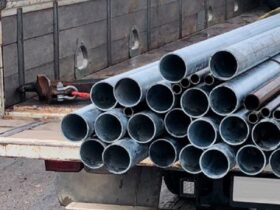The relevance of artificial fur has increased significantly recently – clothing from it has been in great demand. This is explained either by the lack of funds for natural fur, or personal moral beliefs. For many, the rejection of animal skins is a conscious desire to help organizations in the fight for animal rights and the ability to make the world a little kinder.
How to sew artificial fur correctly
The textile industry has made the impossible – artificial fur is now not distinguished from natural. It is soft, shiny and does not fall into lumps. Artificial fur products are also sophisticated and beautiful as from natural. And sew out of it even beginner tailor.
When choosing a model for sewing, it is necessary to take into account the number of structural lines. There should be as few of them. Folds, tucks, overhead pockets – all this is good when working with another material, and the fur models should be simplified. Small assembly is allowed in children’s styles, but even small it greatly complicates the work.
How to sew artificial fur correctly
Loops on artificial fur products make hinged, made of a cord or leather. Buttons are also sewn using an additional strip of fabric or skin. There can be hooks or special clamps as a fastener on fur models – the choice of accessories is determined by the model.
Before starting to cut from artificial fur, you need to put it in one layer so that the fur is directed down. Patterns are laid out in one direction. Cover fake fur, as well as natural – with the help of razor. If this is done with scissors, then you need to ensure that the pile does not fall under the blade. The easiest way to monitor this is if you cut only the tips.
On the bots and the bottom you need to lay the edge to prevent stretching. If the fur is based on knitwear, such an edge should run through all sections. If the circuit is on an adhesive basis – this will greatly simplify the task.
All marks on the details should be from the wrong side. You can make them with a chalk, a special felt -tip pen or pins. The stools make one -piece, and the sides, collar and bottom of the sleeves necessarily lay the fabric, preferably not on an adhesive basis.
Before connecting the parts, the fur is combed away from the cuts and shake the front sides so that the fur does not knock out over the sections. Grind the parts with a small zigzag, on an overlock or on a fussy machine.
Street parts are unfolded and carefully stretched to the sides so that the details are located. Such a seam is flat and neat.
How to sew artificial fur correctly
An ordinary seam can grow parts cut from artificial fur with a short pile, having previously cut off the fur from allowances.
If the suture still got the fur, it can be pulled out with a thick needle. The seam should be slightly noticeable.
Particular attention is paid to the bottom of the product when working with artificial fur. It can be processed in several ways.
First, you can do this manually, cross-shaped stitches. If the fur is long, then for strength two rows of such stitches, or a sharpener from lining fabric, will be required.
If the bottom is bent in two rows of lines, then for the start, the edge is cut smoothly and wrapped on an overlock, zigzag or manually. Then the edge is bent on the front side (!) and is admitted. Then the invetate edge is bent on the wrong side and is filled with free crosschers along the tags. After that, the first outflow is removed, the bottom straightens out and another line is laid, along the processed edge.
To treat the bottom with a stool, it is cut out of lining fabric, along the oblique. The width of such a box should be 10 cm. The stream is folded in half by the wrong side and ironed.
On the front side of the product, the box is tuned with a seam of 6 mm, placing it with a cut to the cut of the product. The villi that fell into the seam must be pulled out with a needle and after that the turn is turned inside out so that the fur is bent by 1.3 cm. The upper edge of the stool is handed manually with a secret line to the base of the fur.
After the bending, the bottom is simply smoothed with your palm, without pressing. It is impossible to iron products made of fur – all seams are neatly straightened and pressed with your fingers.











Оставить ответ